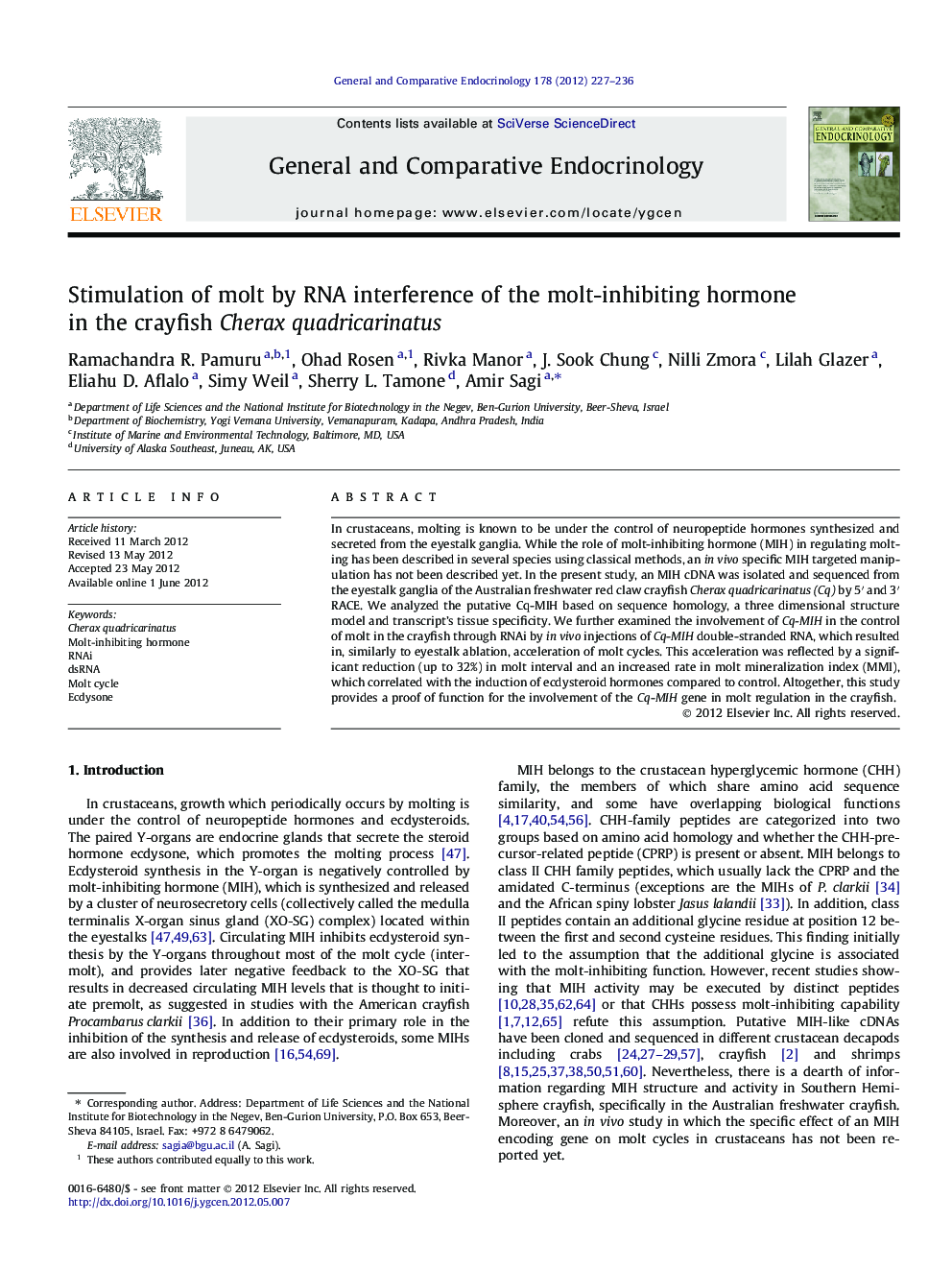| Article ID | Journal | Published Year | Pages | File Type |
|---|---|---|---|---|
| 2800479 | General and Comparative Endocrinology | 2012 | 10 Pages |
In crustaceans, molting is known to be under the control of neuropeptide hormones synthesized and secreted from the eyestalk ganglia. While the role of molt-inhibiting hormone (MIH) in regulating molting has been described in several species using classical methods, an in vivo specific MIH targeted manipulation has not been described yet. In the present study, an MIH cDNA was isolated and sequenced from the eyestalk ganglia of the Australian freshwater red claw crayfish Cherax quadricarinatus (Cq) by 5′ and 3′ RACE. We analyzed the putative Cq-MIH based on sequence homology, a three dimensional structure model and transcript’s tissue specificity. We further examined the involvement of Cq-MIH in the control of molt in the crayfish through RNAi by in vivo injections of Cq-MIH double-stranded RNA, which resulted in, similarly to eyestalk ablation, acceleration of molt cycles. This acceleration was reflected by a significant reduction (up to 32%) in molt interval and an increased rate in molt mineralization index (MMI), which correlated with the induction of ecdysteroid hormones compared to control. Altogether, this study provides a proof of function for the involvement of the Cq-MIH gene in molt regulation in the crayfish.
► An eyestalk-specifically expressed gene has been identified in Cherax quadricarinatus. ► The putative Cq-MIH shares structural similarity with CHH-family peptides. ► MIH RNAi specifically induces the progress of gastrolith development during premolt. ► MIH RNAi reduces molt interval and speeds up the increase of ecdysteroid levels.
